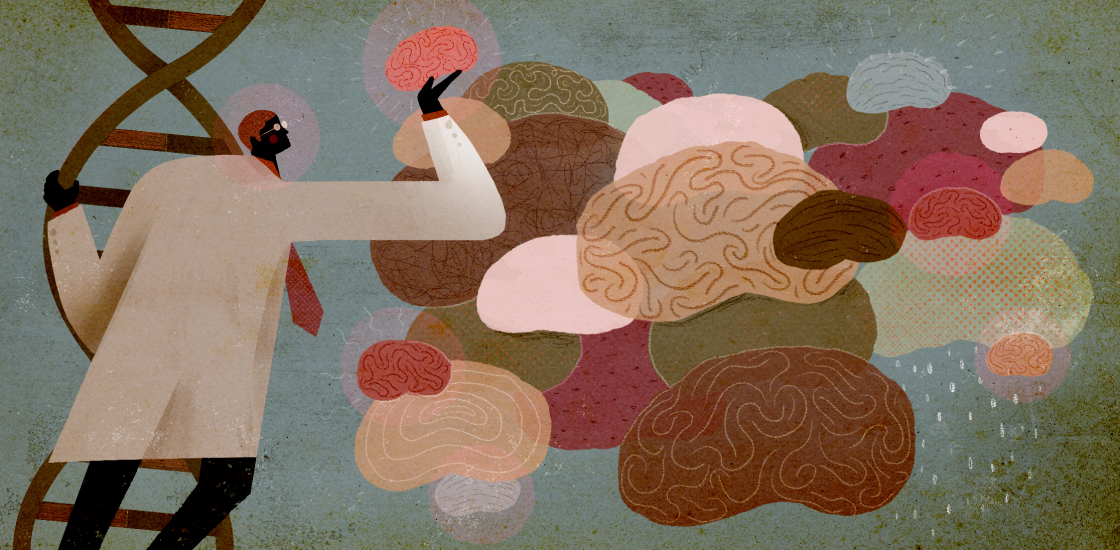THIS ARTICLE IS MORE THAN FIVE YEARS OLD
This article is more than five years old. Autism research — and science in general — is constantly evolving, so older articles may contain information or theories that have been reevaluated since their original publication date.
An international team of researchers has launched the largest genetic study of postmortem brain tissue to date. The goal of the project, called PsychENCODE, is to reveal common genetic players in a trio of neuropsychiatric conditions, including autism1.
The project, detailed 25 November in Nature Neuroscience, brings together 84 experts from 16 institutions, and includes brain banks and private collections spanning nine U.S. states. The team has already amassed postmortem brain tissue from more than 1,000 people, many of whom had autism, schizophrenia or bipolar disorder, and plans to genetically characterize the tissue over the next several years.
These conditions are all highly heritable and may share a genetic basis. Nearly one-third of children with bipolar disorder also have autism. Mutations seen in autism are implicated in schizophrenia, and schizophrenia has genetic ties to bipolar disorder. But scientists have yet to home in on shared genetic pathways.
To better understand this overlap, the PsychENCODE team aims to analyze gene expression and epigenetic changes in postmortem brain tissue from people who had one or more of the three disorders, and from controls. Based on the findings, the researchers plan to create comprehensive maps of gene regulation.
The mammoth project skirts the pitfalls of previous brain tissue studies, such as having too few brains, poorly preserved tissue and incomplete medical histories of the donors. All of the PsychENCODE tissue comes from brain banks and private collections that contain detailed information about donors.
Game plan:
The researchers are focusing their genetic analysis on brain regions and cell types implicated in neuropsychiatric disorders. They are sequencing both DNA and RNA from each sample. By comparing these sequences, they can sort segments of the genome that code for genes from noncoding regions that may contain regulatory elements.
They plan to probe brain tissue from children and teenagers, using a technique that ferrets out chemical tags on DNA that turn genes on or off. The distribution of these tags could shed light on why autism appears before age 5, whereas bipolar disorder and schizophrenia typically emerge in late adolescence.
The researchers aim to validate their findings in cells and mice, using the gene-editing tool CRISPR to mimic any genomic disruptions they find. They also plan to repeat their analysis in brain tissue from rhesus macaques and chimpanzees.
Scientists can access raw data from PsychENCODE online, slated to be updated every six months.

By joining the discussion, you agree to our privacy policy.